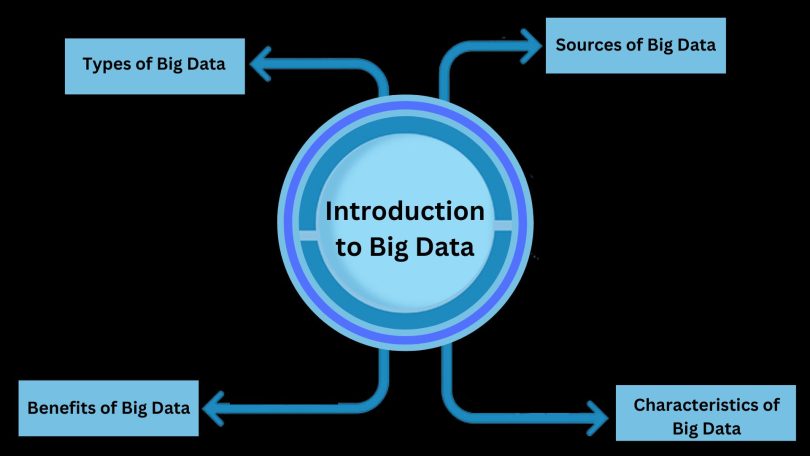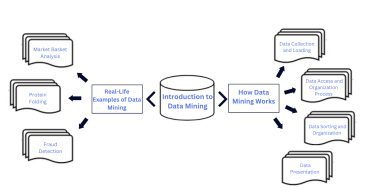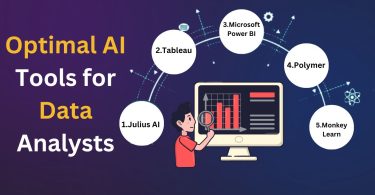What is Data?
It is defined as an entity that is entered into a computer for processing or is given out by a computer as the result of processing. This information can be saved and communicated in the form of electrical impulses and can be written on different kinds of media, magnetic, optical or mechanical.
What is Big Data?
Big Data is a set of data that is large in size and increases in size at a very high rate. This data is usually characterized by its volume and variability which makes it difficult to handle with traditional data management systems.
Types of Big Data
It has 03 key types…
- Structured Data
Such kind of data is well structured and can be easily archived in databases. It usually covers such data as dates, numbers and categories. These include accounts and other financial documents, stock records, and customer records.
- Unstructured Data
Big data which is unstructured does not have a set or fixed pattern and is usually created by people. It comprises texts, images, audio and video clips. Examples are posts on social media, emails, and customers’ feedback.
- Semi-Structured Data
This data type is a combination of the structured and unstructured data types but has distinct characteristics from the two. It has some kind of organizational properties but it cannot be easily classified under the conventional database structures. Some of the examples of text data include XML files, JSON files and weblogs.
Sources of Big Data
Social Media: Services like “Facebook”, “WhatsApp”, “X”, “YouTube” and “Instagram” produce a tremendous amount of data from actions such as uploading a picture or a video, messaging, or sharing content.
Sensors: Information is gathered by sensors placed in different areas to measure aspects of the environment like temperature or humidity, or traffic. Security cameras in areas such as airports and shopping malls also produce a large amount of data.
Customer Feedback: Data is created from customers’ feedback on products and services that are usually collected on retail and service websites.
Such feedback is useful to related firms to comprehend clients’ experiences.
IoT Appliances: Smart devices such as TVs, washing machines, coffee machines, etc. create data based on the connectivity of their functions. This is often raw data that is generated by sensors present in such devices.
E-commerce: A lot of data is produced from online retailing, banking, and stock market transactions. This is information regarding credit cards, debit cards, and all other electronic means of payment.
Global Positioning System (GPS): In vehicles, GPS technology provides data concerning the movements that are made in cars to help in efficient routing and fuel savings.
Transactional Data: This data is based on the transactions that include the date and time of the transaction, the place, the products or services bought, the price, the method of payment, and the discount. It is an essential element for the study of customer behavior.
Machine Data: Real-time machine data is generated by default through events or can be created through a schedule. Some of the sources are satellite systems, computers, portable devices, industrial equipment, smart sensors, SIEM logs, medical devices, and many others.
Benefits of Big Data
The ability to process Big Data within a database management system (DBMS) offers several key benefits:
- There is a lot of information beyond the organizational boundaries that can be utilized to enhance the business strategies such as social media information from Facebook and Twitter.
- The old-fashioned feedback systems are now giving way to the new feedback systems that incorporate Big Data and natural language processing solutions. These new systems can decode the response of the consumer much better and help in providing better customer satisfaction.
- Big Data analysis can help to identify the possible threats to products or services at the initial phase and prevent such threats.
- It can establish the stage for new data entry and can help in the efficient loading of data into the data warehouses
- It assists in the management of data storage by shifting the data that is used less frequently to other storage systems ultimately increases the efficiency of the operation.
Characteristics of Big Data
It is characterized by four main attributes, commonly referred to as the 4Vs…
Volume: It refers to the giant quantity of data created and gathered which are usually in “terabytes”, “petabytes” or in “exabytes”. This is massive in scale and cannot be processed using conventional techniques; therefore, new tools are needed for data management.
Velocity: Velocity refers to the rate at which data is created and must be analyzed. Most of the Big Data is generated in real-time or near real-time, which requires analysis to be performed in real-time to support real-time decision-making, especially in trading and fraud detection among others.
Variety: This characteristic explains the various types and sources of data that are associated with Big Data. It encompasses both, the organized data and the not organized data coming from multiple sources like social networks, sensors and mobile devices. The variety also relates to the format of the data, which can be textual, auditory, graphic, and video graphic.
Veracity: Accuracy relates to the honesty of the information, or in other words, the veracity of the information. As Big Data can include mistakes, prejudicial information, and ambiguity, it is vital to maintain the data veracity, particularly in the disciplines that require high accuracy and credibility like scientific research and medical diagnosis.
These characteristics as a whole present a lot of difficulties but at the same time open a whole world of opportunities for organizations ready to embrace Big Data.
Summary
Big Data is a treasure trove that is yet to be exploited to the fullest for the benefit of business firms. With evolving technology, the ability to gather, store and analyze vast quantities of data is expected to grow significantly. This will, in return, create more advanced analytics and even more effective predictive modeling. It is one of the most promising areas that will continue to evolve as organizations use it to improve processes, create new solutions, and gain advantages.




Leave a Comment